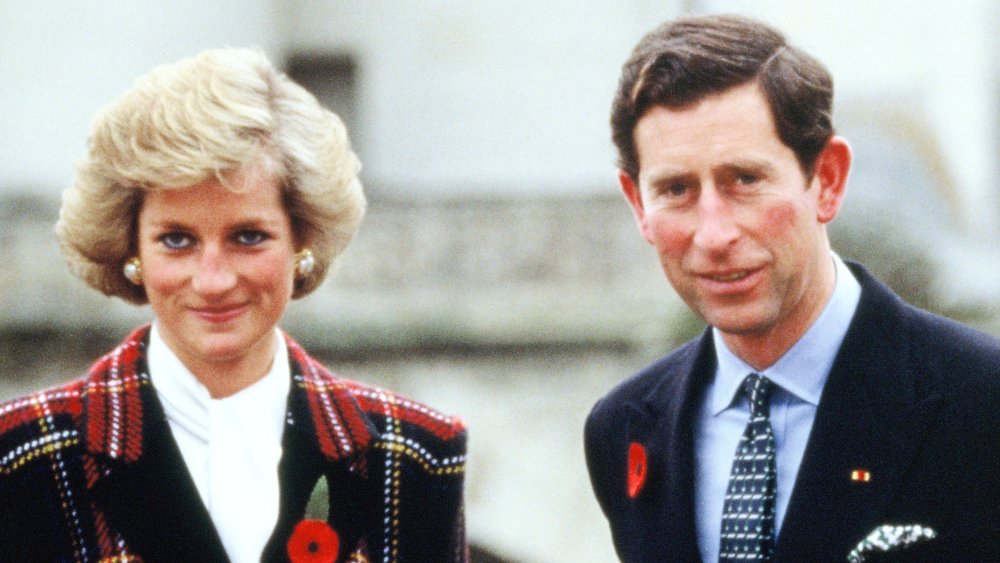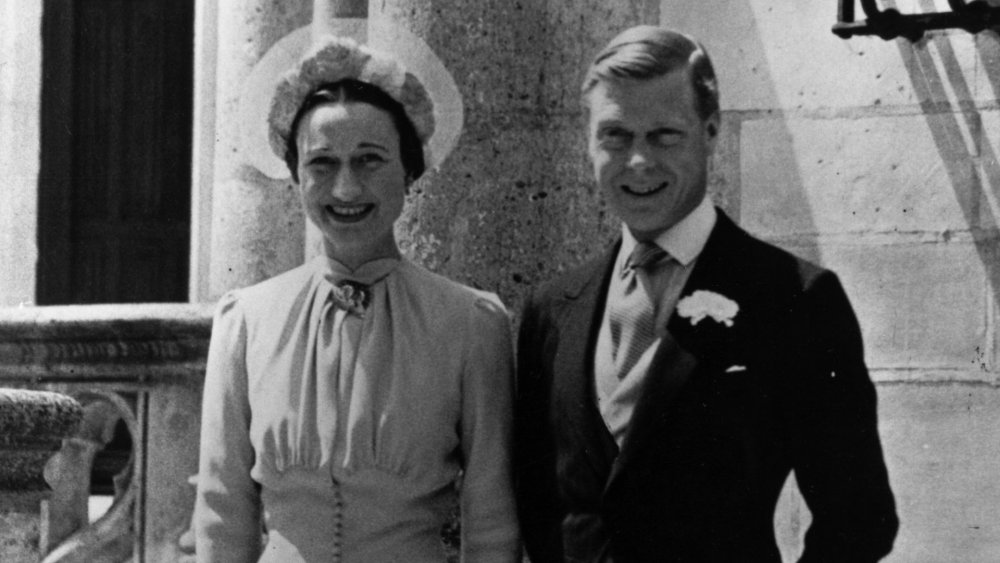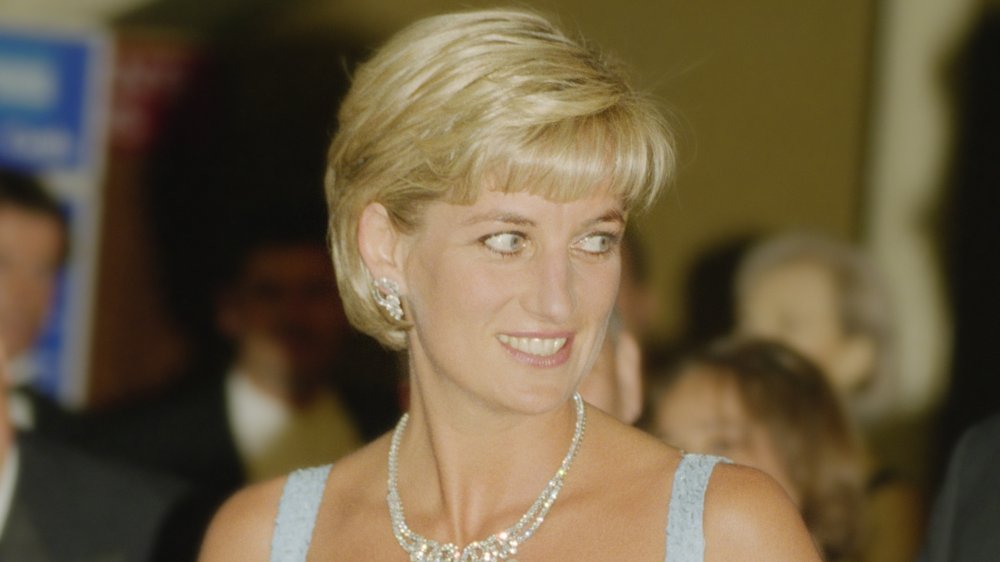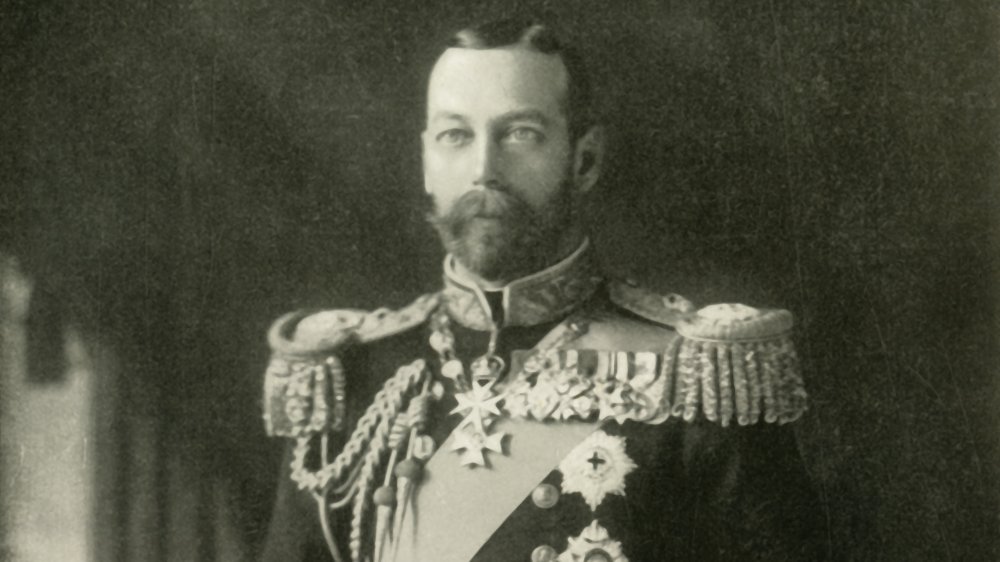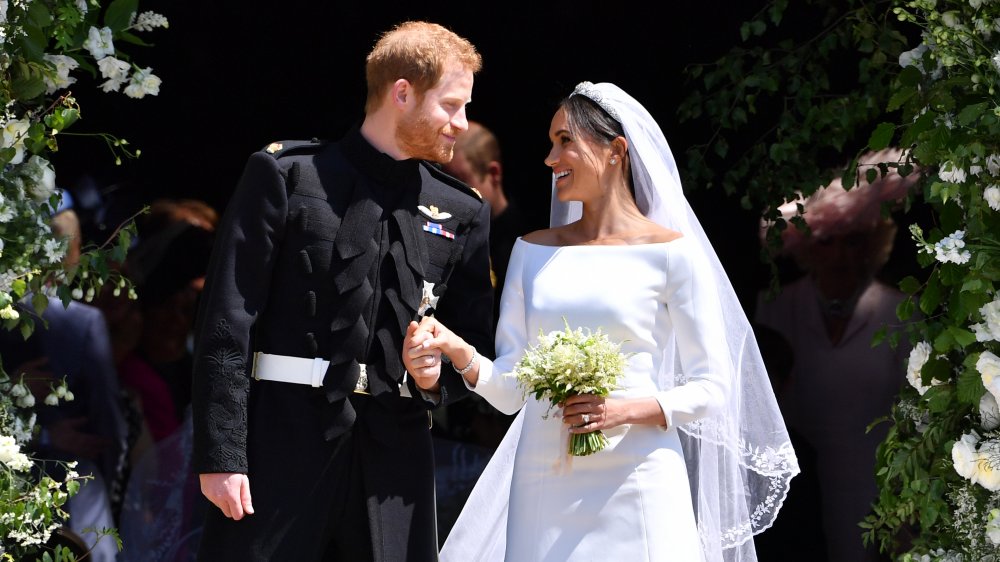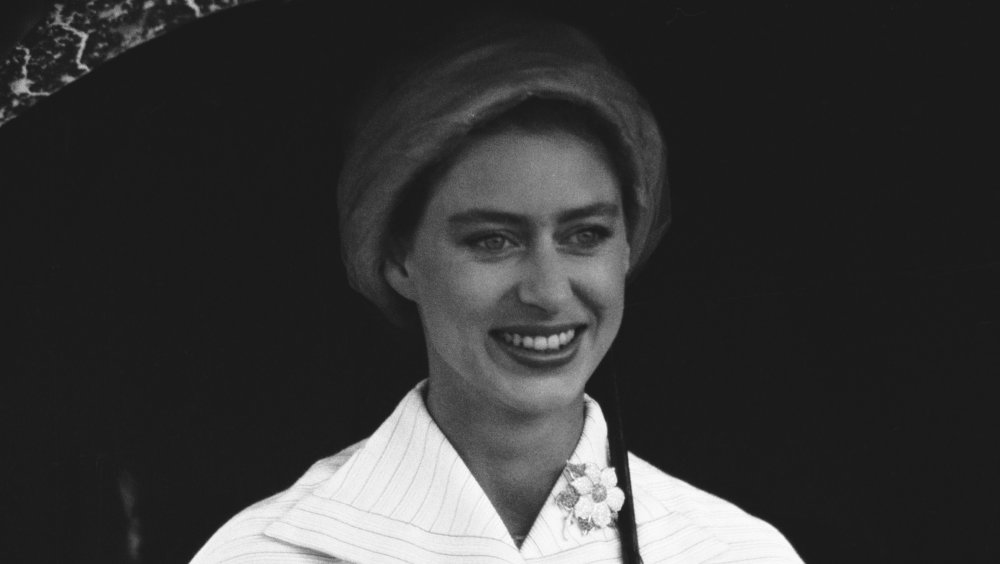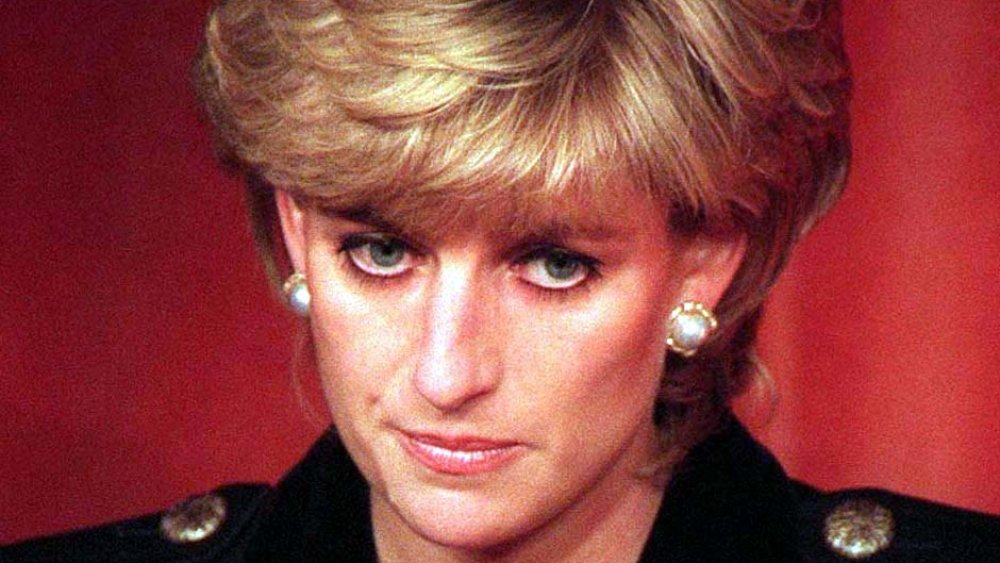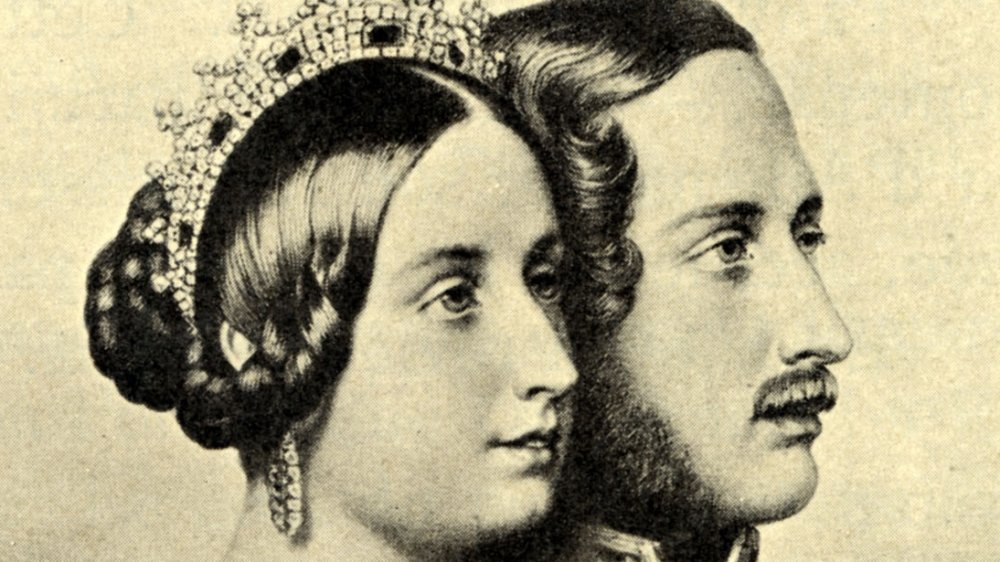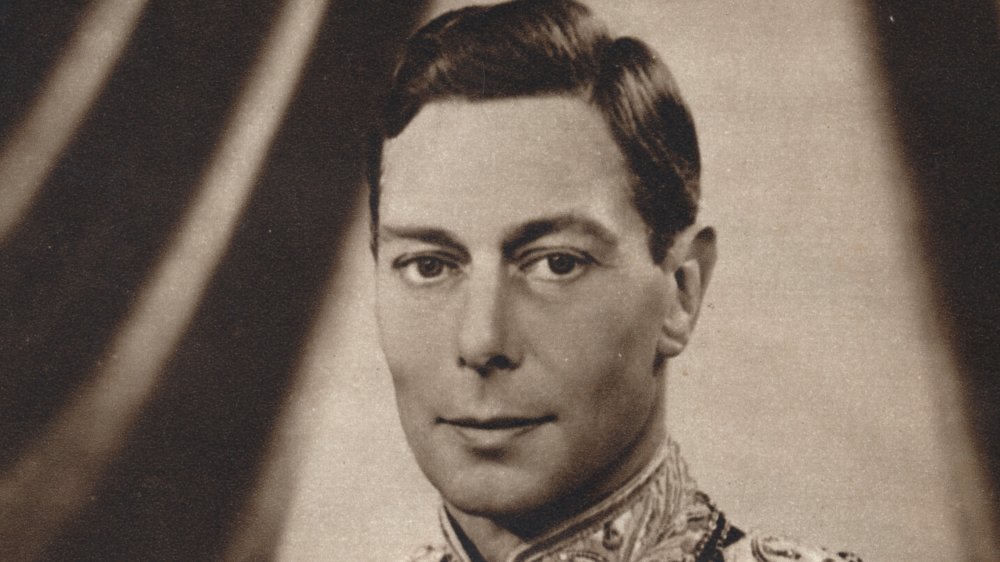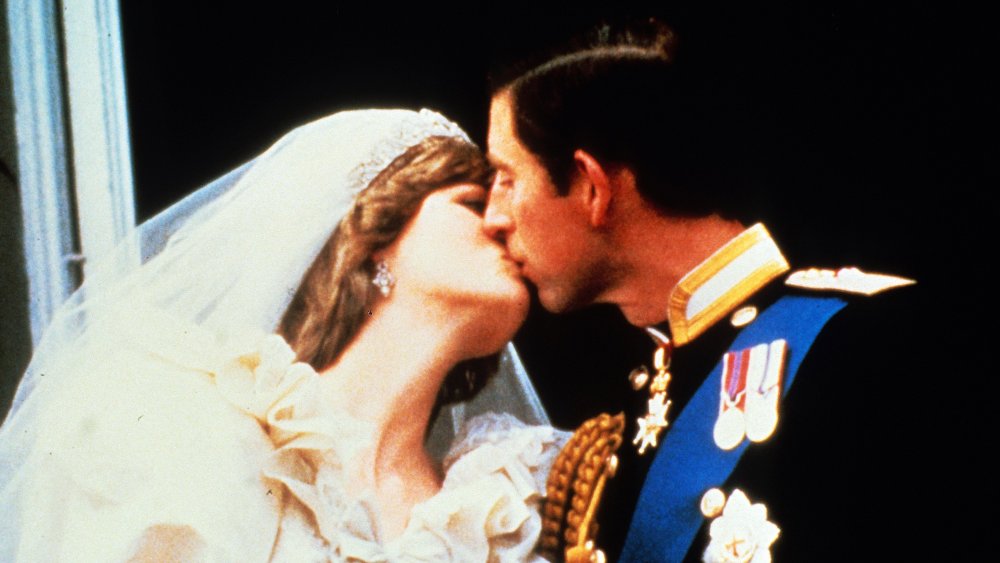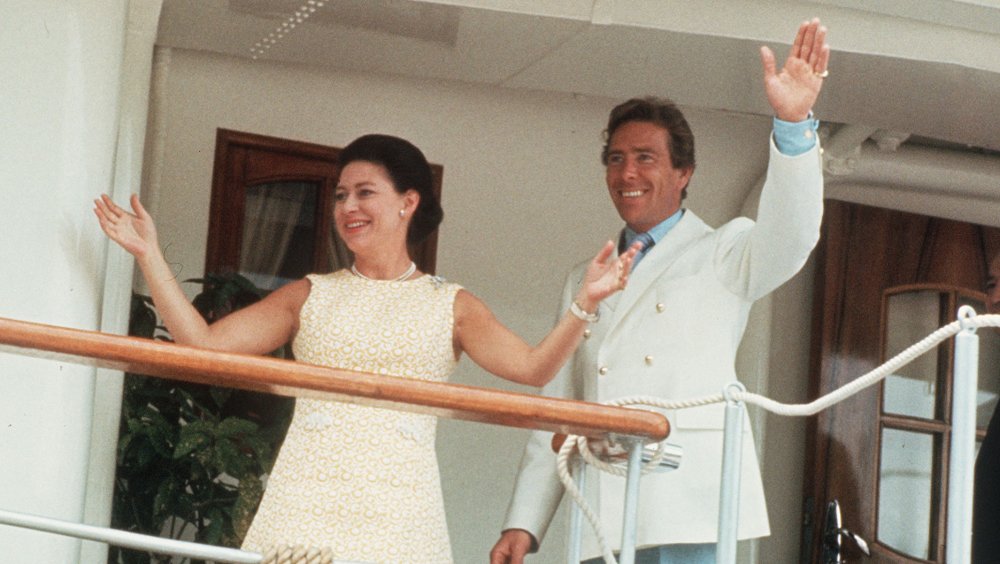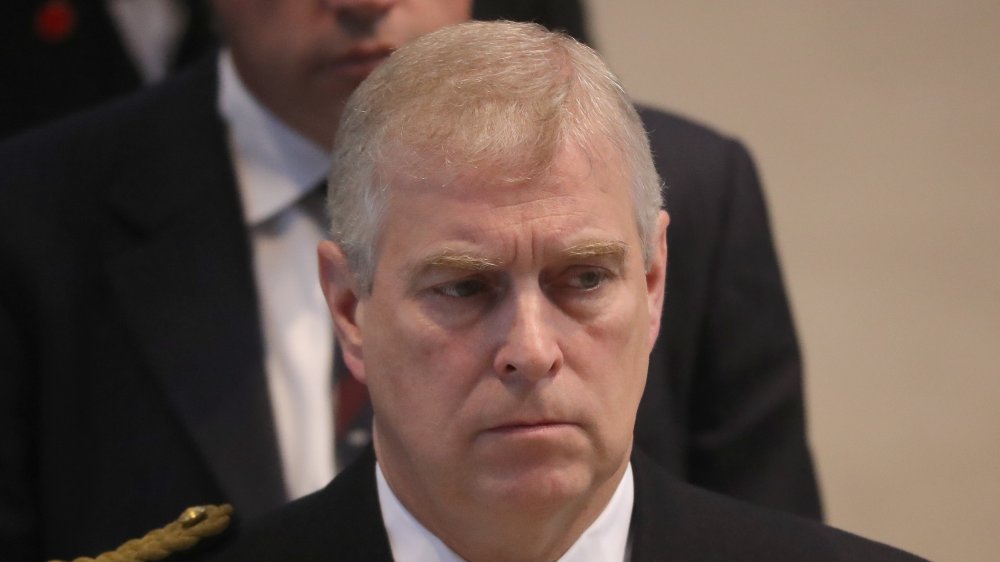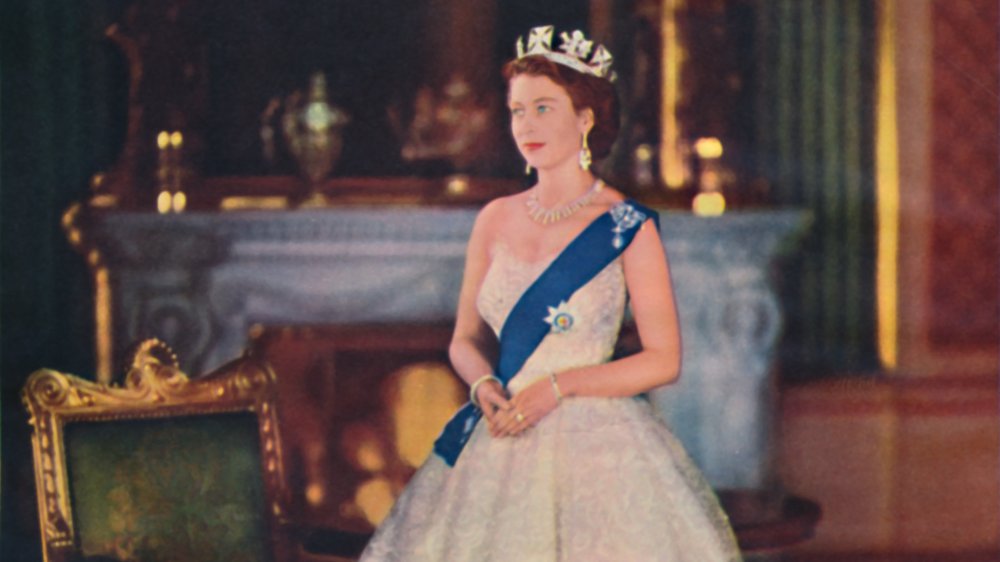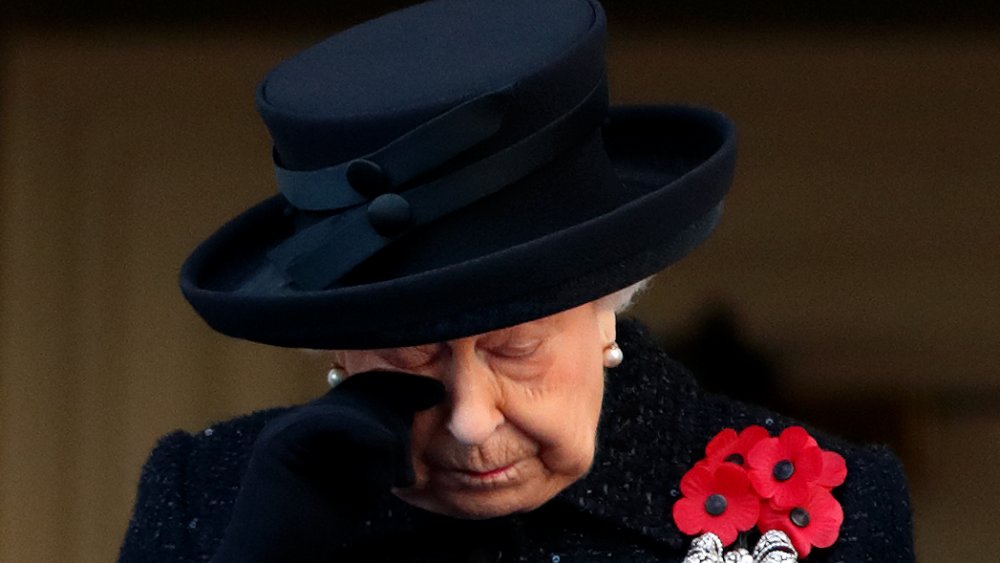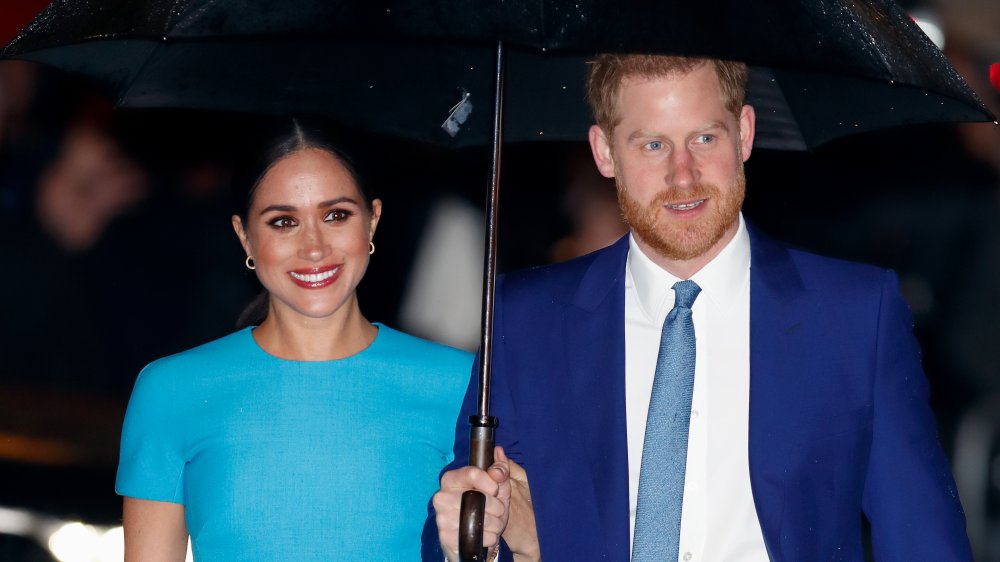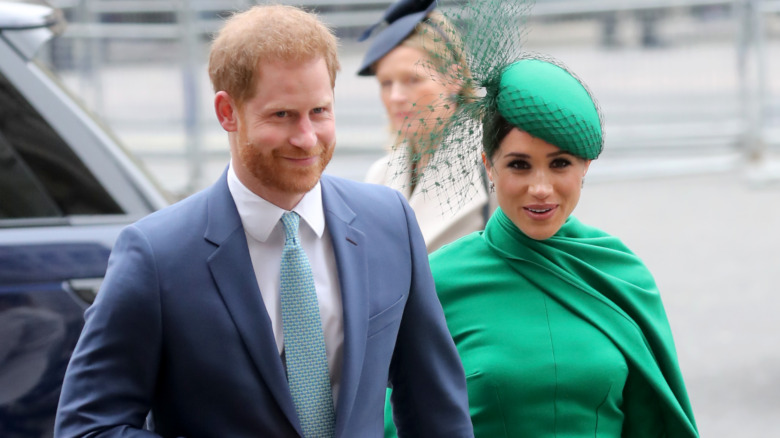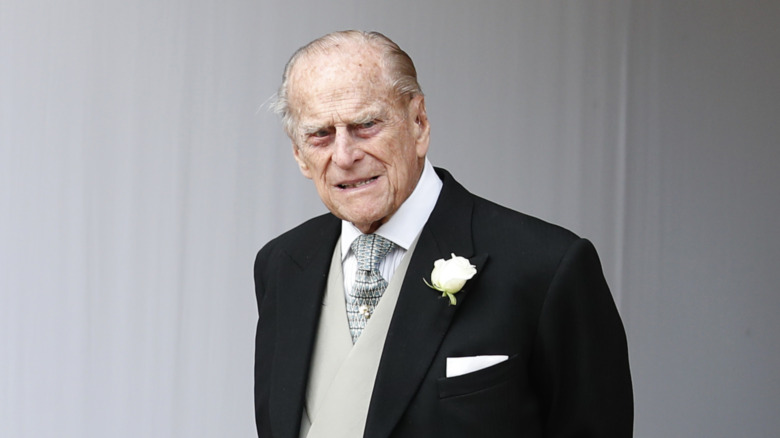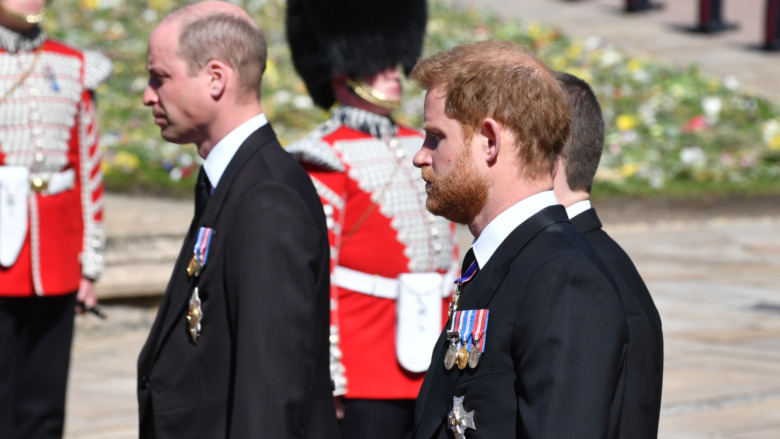Moments That Changed The Royal Family Forever
The British royal family is synonymous with constancy, providing an enduring sense of security in a changing world, according to The Perspective. After all, to maintain a monarchy for centuries, it stands to reason that you need a bit of status quo — and, therefore, change itself would be the enemy.
Over the years, however, there have been many shocking moments that have thrown the royal family into disarray and upended their safe, dependable sameness. From the tumultuous abdication of King Edward VIII to the heartbreaking death of Princess Diana, these unexpected moments were turning points, with far-reaching and long-lasting implications.
While some of these instances have been more explosive than others, there's no doubt that each of these events left a lasting impression — not just on the royal family, but on the public and their subjects, too. Here's a look at some of the moments that changed the royal family forever.
King Edward VIII's abdication changed the royal family forever
When King Edward VIII announced to his subjects in 1936 that he was abdicating the throne, it was shocking — to say the least. Even more shocking was the reason behind the abdication: He wished to marry Wallis Simpson, his twice-divorced American lover.
According to Biography, "religious and cultural obstacles" stood in his way of the king marrying Simpson. As such, Edward decided life with his beloved was worth more than the throne, declaring, "You must believe me when I tell you that I have found it impossible to carry the heavy burden of responsibility and to discharge my duties as king as I would wish to do without the help and support of the woman I love."
Edward and Simpson were exiled and took up residence in Paris, France, where the disgraced king eventually died in 1972, according to Town & Country.
Princess Diana's tragic death made an impact on all
Princess Diana was feasibly the most famous woman in the world at the time of her death. In 1997, the 36-year-old princess was involved in a car crash that shocked and horrified the globe. Diana was traveling with her romantic partner Dodi al-Fayed when they were pursued by paparazzi after leaving a suite at the Ritz Hotel, according to The Washington Post. After years being hounded by photographers eager to capture her every move, Diana seemed like she had finally found happiness, according to The Mirror. As a result, her death was that much more stunning and traumatizing, and resulted in an outpouring of grief, according to BBC.
The queen was at Balmoral Castle with Princes Charles, William, and Harry when the news of Diana's death reached her, Reader's Digest explained. Mourners waited to hear from her, but the queen "misread the national mood," according to the Herald Sun, and employed her trademark silence, thus angering the nation.
Nearly a week after Diana's passing, the queen addressed a traumatized nation, saying, "No one who knew Diana will ever forget her." Queen Elizabeth's speech was uncharacteristically emotional for the monarch, and a turning point in how the family showed their humanity.
Adopting a new last name was a big change for the royals
During World War I, anti-German sentiment was strong in Britain, according to The Guardian. This came to a head when German Gotha bombers attacked a school, leading to the deaths of 18 schoolchildren. Unfortunately, the royal family happened to share a partial name with the warplanes, as their surname was Saxe-Coburg-Gotha.
Wanting to distance themselves, the royal family — with King George V (pictured above) at the helm — decided to change their last name. In 1917, the king proclaimed (via The Guardian), "The Name of Windsor is to be borne by His Royal House and Family and Relinquishing the Use of All German Titles and Dignities."
With World War II on the horizon, it was "prescient," according to Express. "If in 1939 the royals had had a German surname it would have been an extremely unfortunate situation so it turned out in the long term to be a very good move," said University of Buckingham history professor Jane Ridley.
Prince Harry's marriage to Meghan Markle changed the royal family forever
When it was announced in 2016 that "Suits" actress Meghan Markle was dating Britain's Prince Harry, the world's media cycle swiftly readied to excitedly share more about Meghan, according to Vanity Fair.
In 2019, Meghan and Harry married at Windsor Castle in a beautiful wedding. Meghan made headlines not only because of her actor past and previous divorce, but also because she was the first biracial senior royal in the British Royal Family in modern times if not ever. According to Lady Colin Campbell's book, "Meghan and Harry: The Real Story," the queen felt Meghan's biracial identity made the monarchy more "reflective and representative of multicultural, multiracial Britain" and was in favor of Meghan entering the family to help the monarchy appear more modern.
Meghan's divorced status was also groundbreaking. According to History, the British monarchy found the idea of marrying a divorced person to be "taboo" for hundreds of years. Because Queen Elizabeth was required to consent to the match, it was thought to prove that the royal family had evolved.
Princess Margaret and Peter Townsend's relationship was controversial
When Queen Elizabeth's younger sister, Princess Margaret, fell in love with divorced royal equerry Peter Townsend, it was soon to set off a crisis within the royal family, according to Town & Country.
If Margaret married Townsend, the government would've made sure the princess lost her income and royal privileges. The scandal of his divorce made him an unsuitable candidate, so Margaret decided to stay royal. Margaret publicly announced that she was not going to marry Townsend because of the Church's teaching that Christian marriage is indissoluble, saying, "Conscious of my duty to the Commonwealth, I have decided to put these considerations before any others" (via Town & Country).
While Queen Elizabeth didn't want Margaret to marry Townsend because he was divorced, divorces were soon to become common in the royal family. As noted by USA Today, three of Elizabeth's four children would go on to get divorced — as would Margaret herself.
Princess Diana's no-holds-barred interview made waves in the royal family
In 1995, Princess Diana sat down with Martin Bashir to grant a bombshell interview for Panorama BBC. During the interview, Diana and Bashir covered everything from the ending of her marriage with Prince Charles to his affair with Camilla Parker Bowles to the shocking admission that Diana herself had had an affair with James Hewitt, according to Reader's Digest. One of the most famous lines of the interview was Diana's tearful protest that "there were three of us in this marriage, so it was a bit crowded," according to The Sun.
The infamous interview, which also highlighted Diana's bouts with depression and bulimia, had lasting implications, BBC News noted. Her candidness opened up a conversation around mental health in the royal family, leading to her sons' own focus on mental health issues. Princes William and Harry are clearly "following in [her] footsteps in terms of her charity work," Richard Fitzwilliam told the outlet.
Former Prime Minister Tony Blair also pointed to the documentary as a turning point. "She was the first member of the Royal Family that people felt behaved and acted like a normal human being," he revealed.
The royal family was changed forever when Princess Alexandrina became Queen Victoria
Born as Alexandrina Victoria, the future Queen Victoria was the only daughter of Edward, Duke of Kent, the fourth son of King George III, according to the royal family's official site. Her father died when she was young and although Edward's three older brothers had children, none of those children survived to adulthood. As such, when the Duke of Kent died, she became the heir to the throne.
Alexandrina took the throne as Queen Victoria at the tender age of 18, according to Britannica. Her reign, one of the longest in history, was associated with "Britain's great age of industrial expansion, economic progress and, especially, empire," according to the royal family's site. "At her death, it was said, Britain had a worldwide empire on which the sun never set."
Victoria redefined the British monarchy, according to BBC Teach, restoring a reputation which had been ruined by her uncles. At the height of her reign, she ruled over an empire that spanned one quarter of the world and reached more than 400 million subjects, with her name synonymous with the Victorian Age itself.
The appointment of Prince Albert as king led to Queen Elizabeth's reign
When Prince Albert, the Duke of York, became King George VI in 1936, it was the culmination of a series of events that ultimately changed the royal family forever.
As the younger brother of Prince Edward, the heir to the throne, King George was never actually supposed to be king, according to Reader's Digest. However, Edward had fallen in love with divorcee American Wallis Simpson, who was still married to her second husband. At that time, divorce was still seen as taboo within the royal family, according to History.
To ward off potential scandal and an uproar from the public, Edward was given a choice, and he chose Simpson over the throne. Upon stepping down, the crown went to Edward's younger brother Albert. If not for these events, King George's daughter, Elizabeth, may never have become queen.
Prince Charles and Lady Diana's wedding led to increased press coverage of the royal family
On July 29, 1981, more than 750 million people in 74 countries watched the wedding of the Prince and Princess of Wales, Charles and Diana, according to BBC. The wedding was of such immense anticipation in Britain that the day was declared a public holiday and 600,000 people cheered for the newlyweds on the streets of London.
Prince Charles and Lady Diana Spencer's wedding was seen as a real-life "fairy tale" come true, according to Vanity Fair, with the heir to the throne marrying the 19-year-old "real-life Disney princess," complete with her "sweet" nature, nursery teacher job, and impressive lineage. While, of course, the marriage would eventually end in divorce, according to Vanity Fair, on that day, both Charles and Diana were happy. Charles reportedly told a cousin that he was "close to crying from the sheer joy of it all," while Diana called it "heaven, amazing, wonderful."
According to Biography, Diana was so popular after the wedding that the press coverage became "invasive," leading to constant press stories and a culture of "tabloid fodder" that endures even today.
Princess Margaret and Lord Snowdon's split was the first divorce in the immediate royal family in centuries
Queen Elizabeth's sister, Princess Margaret, and her husband Lord Snowdon had one of the royal family's more dramatic relationships, according to Express, with the couple experiencing trouble only "a few years into their marriage."
Margaret could be "possessive" while Tony, as Lord Snowdon was known, was "a serial adulterer," Margaret told biographer Christopher Warwick (via Express), so it's no surprise the couple split. When Margaret and Tony announced their divorce in 1978, after almost 20 years of marriage, it was a watershed moment for the royal family. After all, the dissolution of their marriage was the first divorce of a member of the immediate royal family since 1540, when King Henry VIII was infamously divorced, according to Town & Country.
In her book, "Lady in Waiting: My Extraordinary Life in the Shadow of the Crown" (via Town & Country), Margaret's close friend Lady Glenconner revealed that Margaret was upset about the divorce. Glenconner wrote, "Princess Margaret was devastated that her marriage had failed, but it was impossible for her to do anything about it." In an interview with Fox News, Glenconner revealed that Margaret "didn't believe in divorce. But she had no choice."
Prince Andrew's infamous interview changed the royal family forever
In 2019, Prince Andrew was interviewed by Emily Maitlis for BBC's "Newsnight" to discuss his friendship with convicted sex offender Jeffrey Epstein. The interview was meant to clear up misconceptions about the pair's relationship but was seen as an unqualified "PR disaster," according to The Independent.
Repercussions were swift, with Prince Andrew — reportedly the queen's favorite child — tarnished by the scandal. Andrew gave up his office at Buckingham Palace, according to The Guardian. He also stepped down from some of his charities, like Pitch@Palace, according to the New York Post.
The fallout extended to Prince Andrew's daughter, Princess Beatrice, who married Edoardo Mapelli Mozzi in July 2020 in a tiny wedding in Windsor with only 20 guests, according to The Sun. Regardless of the social distancing measures in place at the time, the publication explained that the wedding came at a "tumultuous" time because of Andrew, and noted that there had been no plans to televise the wedding or hold it publicly. By contrast, Andrew's other daughter, Princess Eugenie, enjoyed a large, public wedding in October 2018 — before Andrew's interview — at St George's Chapel in Windsor, attended by 800 people as well as televised and live streamed, according to Town & Country.
Queen Elizabeth had the royal family's first televised coronation
When Elizabeth was crowned queen at Westminster Abbey on June 2, 1953, it was an event watched around the world, with more than 27 million UK viewers and millions more audiences around the globe, according to the royal family's official site. However, the coronation was special in more ways than one as Queen Elizabeth's coronation was the first to be televised.
The coronation, which took place in front of 8,000 guests, involved an intricate series of events, according to BBC News. It featured six parts: the recognition, the oath, the anointing, the investiture, the enthronement, and the homage. One part of the coronation remained private, however. According to The Telegraph, the cameras were turned when the queen was anointed with holy oil. During the private anointing, the Archbishop of Canterbury made a cross on Queen Elizabeth's forehead with holy oil, and four Knights of the Garter held a silk canopy around the queen.
For most people, the telecast was the first time they had ever watched an event on television, period, according to BBC.
The year 1992 was a tough one for the royal family
The year 1992 was one of the worst years of Queen Elizabeth's life. Considering the many awful, life-changing dramas, Elizabeth dubbed it her "annus horribilis." As The Guardian detailed, not only did Prince Charles and Diana separate in 1992, but the Diana biography by Andrew Morton was published, the Princess Royal got divorced, and the Duchess of York — who'd recently become estranged from Prince Andrew — appeared topless in the tabloids having her toes seemingly sucked by a "financial advisor," according to the publication. Memorably, there was also a devastating fire at Windsor Castle, which destroyed over a hundred rooms, according to the Royal Collection Trust.
In a speech at the end of the year at Guildhall marking the 40th anniversary of her accession, Queen Elizabeth remarked, "1992 is not a year on which I shall look back with undiluted pleasure" (via Royal.uk).
Soon after, as a means of disaster control, the monarchy's "Way Ahead" group was formed. The group included family members and senior advisors who'd meet twice a year "to take the pulse of opinion and discuss policy," according to The Guardian. The Way Ahead group's discussions and decisions led to meaningful changes, including the law on succession allowing firstborn girls to have precedence.
Prince Harry and Meghan Markle's decision to step down changed the royal family's structure
In January 2020, Prince Harry and Meghan Markle stunned the world when they announced that they planned to step back from the royal family, according to BBC News. "We intend to step back as 'senior' members of the Royal Family and work to become financially independent, while continuing to fully support Her Majesty The Queen," they said in a statement posted to their joint Sussex Royal Instagram account.
The couple's struggles have been public ever since Meghan and Harry were interviewed in the ITV documentary, Harry and Meghan: An African Journey, during which the Duke and Duchess of Sussex revealed what they were going through, according to CNN World.
The pair's decision to step back would "change the dynamic of the royal family as we know it," Insider explained in early 2020. With their duties doled out to other members of the royal family, Harry and Meghan were free to collaborate with journalists of their own choosing and pursue secular employment.
Their split from royal duties became permanent in February 2021, as reported by BuzzFeed News.
Prince Harry and Meghan Markle's jaw-dropping interview changed everything
The royal family is known for keeping a tight lid, but that didn't stop Prince Harry and Meghan Markle from airing their complaints. In a sit-down interview with Oprah Winfrey in March 2021, Harry and Meghan dropped bombshell after bombshell, casting their time as senior royals in a very negative light.
As noted by The New York Times, Meghan revealed that she had been suicidal while performing royal duties, telling Oprah she "just didn't want to be alive anymore." The couple also revealed that they experienced racism, drastically so when concerns about their baby's skin tone were voiced. Meghan also said that the royal family jumped in and protected other family members who were receiving negative press attention, but that the same courtesy was not extended to her and Harry. Needless to say, the interview changed just about everything.
The palace released a statement after the interview, saying that the issues brought up were "concerning." The statement also alluded to some tension, as it included that "some recollections" about the events that transpired "may vary" (via The New York Times).
If you or anyone you know is having suicidal thoughts, please call the National Suicide Prevention Lifeline at 1-800-273-TALK (8255).
Prince Philip's death altered the royal family forever
Wherever Queen Elizabeth was, often her husband Prince Philip wasn't too far. The couple spent more than 70 years together, so when Philip passed away in April 2021, it changed the royal family drastically. As noted by the BBC, 99-year-old Philip died at Windsor Castle. A statement released from the palace shortly after said that the queen was experiencing "deep sorrow," and that she and the other members of the royal family would be "join[ing] with people around the world in mourning his loss."
After the prince's death, Prime Minister Boris Johnson said that Philip had "earned the affection of generations" within Great Britain and beyond. His sentiments were echoed by the Archbishop of Canterbury, Justin Welby, who said that Philip "consistently put the interests of others ahead of his own and, in so doing, provided an outstanding example of Christian service."
As noted by The New York Times, Philip's funeral was an understated affair due to the coronavirus restrictions in place in England at the time. Only 30 people were in attendance, and the queen sat by herself for the ceremony.
Prince William and Prince Harry's feud changed the royal family drastically
Every family is prone to arguments, but Prince William and Prince Harry took familial arguing to new heights. As the relationship between Harry and Meghan Markle got serious, William reportedly voiced concerns about its pace, much to Harry's frustration. Things just continued to go downhill from there. Before long, not only were the brothers fighting publicly, but Harry and Meghan had stepped down from their roles as senior royals and moved to California.
As noted by Elle, historian Robert Lacey — who wrote the book "Battle of Brothers" — asserted that the brothers' differing approaches to their love interests was the root of their public feud. William waited and waited and waited, vetting Kate Middleton for love as much as service to the United Kingdom. Harry went for love "unapologetically," and the different tactics caused a huge rift.
"There is texture and history between these brothers, but it's never going to be the same," Lacey asserted. "I would imagine the base for Harry and Meghan is going to remain in the United States for the foreseeable future." Talk about a drastic change for the royals.
